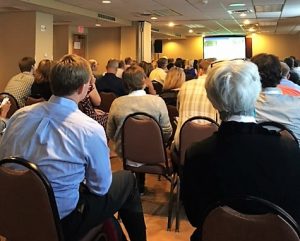It’s impossible to spend your days immersed in landscape architecture, stormwater management, and green infrastructure, and not have a tremendous appreciation for trees.
In New Hampshire, the state is widely forested, so it wouldn’t feel like home without an environment covered in oaks, maples, beeches, pines, and hemlocks. But in urban environments where there is little vegetation, trees are critical, providing much needed shade and wind breaks, filtering the air, drinking up stormwater, and calming our nerves.
Today at the International Low Impact Development Conference in Portland, Maine, my associate Al Key from DeepRoot Green Infrastructure is giving a presentation entitled “Innovative Design and Techniques for Stormwater Management Supportive of Sustainable Horticultural Practices.” It was my pleasure to contribute a number of case studies to the presentation. Over the years I have designed many streetscapes, and for the last decade most streetscapes created at Ironwood Design Group have included street trees installed in suspended soil systems to enhance trees’ growth and protect root zones, but also to collect stormwater generated on paved surfaces. As a part of green infrastructure in cities and towns, we have come to rely on trees to protect our rivers and surface waters from sediment and contaminant-containing stormwater.
Maintaining the health and vitality of our trees, including those in both natural and urban environments, is of the highest priority: We must take care of our trees so that they can take care of us.

